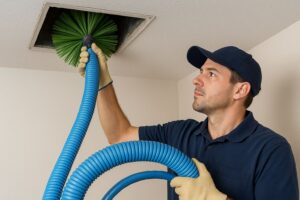Whether you’re setting up for backyard games, school sports, or professional matches, it’s essential to pick a durable volleyball net that delivers both performance and longevity. A reliable net isn’t just part of the game — it defines the rhythm of every serve, spike, and rally. Let’s explore everything you need to know before choosing the right net that meets your needs and stands the test of time.
Why Durability Matters in a Volleyball Net
Volleyball is a high-intensity sport where the net takes repeated tension, ball impact, and environmental exposure. A low-quality net will fray, sag, or break quickly — costing you time, money, and smooth gameplay.
Choosing a net with the right durability ensures:
-
Fewer replacements
-
Safer gameplay
-
Consistent net tension and structure
-
Better experience for players at all skill levels
When you pick a durable volleyball net, you’re not just investing in equipment — you’re investing in quality play.
Types of Volleyball Nets: Know Your Options
Not all volleyball nets are created equal. To make an informed decision, you first need to understand the different types based on setting and usage.
1. Indoor Volleyball Nets
Typically used in gyms, schools, and competitive leagues. They are:
-
Constructed with tightly-woven mesh
-
Supported by strong tension cables
-
Designed for controlled environments (no weather exposure)
2. Outdoor Volleyball Nets
Used for beach, grass, and backyard volleyball:
-
Made from weather-resistant materials
-
Often come with portable pole systems
-
UV-protected to resist sun damage
3. Portable Volleyball Nets
Ideal for casual players or events:
-
Lightweight and easy to set up
-
May compromise on heavy-duty durability
-
Best for temporary use or travel
4. Professional Tournament Nets
For serious training or competitive leagues:
-
Meets regulation size and standards
-
Reinforced stitching and tensioning systems
-
Designed to withstand high-intensity play
Key Features to Look for When You Pick a Durable Volleyball Net
Durability depends on several key factors. Let’s break down what makes a volleyball net last longer and perform better over time.
1. Net Material
Material is the backbone of any volleyball net. For durability, consider:
-
Polyethylene (PE): Strong and weather-resistant, ideal for outdoor use.
-
Nylon: High strength and flexibility, used in professional indoor settings.
-
Vinyl-Coated Polyester: Added protection for both indoor and outdoor scenarios.
Choose a material that fits your primary environment — indoors or outdoors.
2. Cable System
Look for nets with steel cables or Kevlar tension cords for maximum support. These provide stability and help the net maintain tightness across long-term usage.
Avoid plastic or thin ropes in competitive environments — they wear out quickly.
3. Border Reinforcement
A durable volleyball net includes strong tape or vinyl borders along the top and bottom edges.
Benefits of reinforced borders:
-
Prevent fraying
-
Maintain net shape
-
Support even tension distribution
Double-stitched or quadruple-stitched edges are signs of a well-constructed net.
4. Mesh Size and Thickness
Standard mesh size is around 4 inches square, but the strength lies in the thickness of the thread.
-
Thicker twine = longer life
-
Knotted mesh = better tension retention
-
UV-treated mesh = ideal for sun exposure
When you pick a durable volleyball net, look for tightly braided mesh with strong thread gauge.
Installation Matters: Get the Most Out of Your Net
Even the most durable net won’t last if installed incorrectly. Proper installation plays a big role in net longevity.
Tips for Proper Setup
-
Use rust-proof poles and stable ground anchors.
-
Ensure even tension using side ties or tensioners.
-
Store portable nets properly after use.
A poorly installed net sags over time and causes uneven tension, increasing the chances of wear and tear.
Use Cases: Match the Net to the Purpose
Your usage determines the type of net you should choose. Consider these scenarios when evaluating options:
Backyard or Recreational Play
-
Lightweight and budget-friendly
-
Simple setup
-
Doesn’t need to be tournament-grade
School or Community Center Use
-
Medium durability
-
Needs to withstand frequent usage
-
Safety and ease of setup are key
Competitive or Club Matches
-
Regulation size (32 feet long x 39 inches high)
-
Heavy-duty cables and reinforced stitching
-
Long-term reliability under pressure
Choosing based on your actual use helps prevent overbuying or underperforming.
Maintenance Tips to Extend Lifespan
Durability isn’t just about what you buy — it’s also about how you maintain it. To make your volleyball net last longer, follow these tips:
-
Store Indoors When Not in Use: Even weather-resistant nets benefit from dry storage.
-
Clean Occasionally: Rinse off dirt, sand, or saltwater to prevent material degradation.
-
Inspect for Damage: Regularly check borders, cables, and mesh for early signs of wear.
-
Avoid Sharp Objects: Ensure the playing area is free of anything that could tear the net.
A few minutes of upkeep can save you the cost of early replacements.
Common Mistakes to Avoid
When choosing a net, many people overlook important aspects. Here are common errors to avoid:
-
Buying based on price alone without checking materials
-
Choosing the wrong type for indoor vs outdoor use
-
Ignoring the importance of reinforced edges
-
Overlooking the support cable type
-
Not considering long-term usage needs
Avoiding these mistakes ensures a more efficient purchase that delivers value over time.
Regulation vs Non-Regulation Nets: What’s Right for You?
For casual players, exact dimensions may not be essential. But if you’re playing in a league or hosting official matches, go for regulation nets.
Regulation Specifications
-
Length: 32 feet
-
Height: 7 feet 11 5/8 inches (men) / 7 feet 4 1/8 inches (women)
-
Mesh size: 4 inches square
Even recreational players can benefit from regulation-style nets for a more realistic game feel.
What to Check Before Buying
Before finalizing your purchase, run through this checklist:
-
Is the material suitable for your environment?
-
Are the cables strong enough for tension?
-
Does the mesh resist weather and sun?
-
Are the edges reinforced?
-
Is it easy to install and maintain?
Making a checklist helps you focus on features that truly matter when you want to pick a durable volleyball net.
Future Trends in Volleyball Nets
With sports tech on the rise, expect new innovations in volleyball net design, such as:
-
Smart tension sensors
-
Anti-sagging tech
-
Eco-friendly net materials
-
Compact storage solutions
Keeping an eye on these trends can help you stay ahead, especially if you’re managing a sports facility or organizing regular games.
Final Thoughts
To pick a durable volleyball net, think beyond price — focus on the build quality, material, and the specific conditions in which the net will be used. From backyard setups to professional-level play, the right net ensures smooth games, better safety, and long-term value.
Choosing the correct net isn’t complicated — but it does require attention to detail. By understanding your needs and recognizing what features define durability, you can make a confident, informed choice that enhances every match you play.




